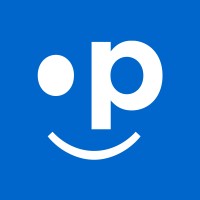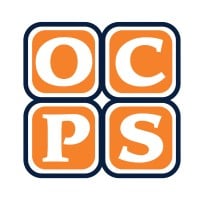
Charlotte-Mecklenburg Schools Company Cyber Security Posture
cmsk12.orgVision: Charlotte-Mecklenburg Schools provides all students the best education available anywhere, preparing every child to lead a rich and productive life. Mission: The mission of CMS is to maximize academic achievement by every student in every school. About CMS Charlotte-Mecklenburg Schools (CMS) is located in the Charlotte, North Carolina region and provides academic instruction, rigor and support each school day to more than 146,000 students in kindergarten through 12th grade in 170 schools throughout the cities and towns of Mecklenburg County. CMS believes setting high standards for all students creates a greater opportunity for future success – in our communities, within the region and across our diverse and global society. Each day, CMS students are prepared to be leaders in a technologically savvy and globally competitive world. CMS is proud of its diverse mix of students who represent 160 different countries and various cultural and ethnic backgrounds. CMS offers an extensive range of magnet programs in 38 of its schools to nurture the talents of students who have interest and ability in specific areas. CMS also educates, supports, and meets the needs of students with learning and physical disabilities. CMS is one of the largest employers in Mecklenburg County with approximately 18,000 teachers, support staff and administrators. CMS is fortunate to have tremendous support from Charlotte’s corporate, faith and business communities and more than 90,000 mentors and volunteers that support learning and instruction in CMS classrooms. The public school system in Charlotte-Mecklenburg has a rich and intricate history. Built upon the efforts of many individuals who firmly believed in the importance of education to this community, public schools in this area have had a tremendous impact on the growth and economy of the region – as well as the thousands of individuals it has served.
Charlotte-Mecklenburg Schools Company Details
charmeckschools
14453 employees
37442
611
Primary and Secondary Education
cmsk12.org
Scan still pending
CHA_2306553
In-progress
Between 800 and 900
This score is AI-generated and less favored by cyber insurers, who prefer the TPRM score.
 Charlotte-Mecklenburg Schools Global Score
Charlotte-Mecklenburg Schools Global Score.png)

Charlotte-Mecklenburg Schools Company Scoring based on AI Models
| Model Name | Date | Description | Current Score Difference | Score |
|---|---|---|---|---|
| AVERAGE-Industry | 03-12-2025 | This score represents the average cybersecurity rating of companies already scanned within the same industry. It provides a benchmark to compare an individual company's security posture against its industry peers. | N/A | Between 800 and 900 |
Charlotte-Mecklenburg Schools Company Cyber Security News & History
| Entity | Type | Severity | Impact | Seen | Url ID | Details | View |
|---|---|---|---|---|---|---|---|
| Charlotte-Mecklenburg Schools | Breach | 80 | 4 | 09/2015 | CHA133120422 | Link | |
Rankiteo Explanation : Attack with significant impact with customers data leaksDescription: The personal data of more than 7,000 people who applied for jobs with Charlotte-Mecklenburg Schools had been mistakenly shared with an outside contractor. The leaked data included applicants' names, addresses, and Social Security numbers of the job applicants. The school district immediately contacted the contractor and asked him to destroy the data. | |||||||
Charlotte-Mecklenburg Schools Company Subsidiaries

Vision: Charlotte-Mecklenburg Schools provides all students the best education available anywhere, preparing every child to lead a rich and productive life. Mission: The mission of CMS is to maximize academic achievement by every student in every school. About CMS Charlotte-Mecklenburg Schools (CMS) is located in the Charlotte, North Carolina region and provides academic instruction, rigor and support each school day to more than 146,000 students in kindergarten through 12th grade in 170 schools throughout the cities and towns of Mecklenburg County. CMS believes setting high standards for all students creates a greater opportunity for future success – in our communities, within the region and across our diverse and global society. Each day, CMS students are prepared to be leaders in a technologically savvy and globally competitive world. CMS is proud of its diverse mix of students who represent 160 different countries and various cultural and ethnic backgrounds. CMS offers an extensive range of magnet programs in 38 of its schools to nurture the talents of students who have interest and ability in specific areas. CMS also educates, supports, and meets the needs of students with learning and physical disabilities. CMS is one of the largest employers in Mecklenburg County with approximately 18,000 teachers, support staff and administrators. CMS is fortunate to have tremendous support from Charlotte’s corporate, faith and business communities and more than 90,000 mentors and volunteers that support learning and instruction in CMS classrooms. The public school system in Charlotte-Mecklenburg has a rich and intricate history. Built upon the efforts of many individuals who firmly believed in the importance of education to this community, public schools in this area have had a tremendous impact on the growth and economy of the region – as well as the thousands of individuals it has served.
Access Data Using Our API

Get company history
.png)
Charlotte-Mecklenburg Schools Cyber Security News
For local swimmers, there’s not enough water to go around
Local swim clubs and advocates for more community swim facilities have been requesting an additional 50-meter pool to accommodate practices, ...
CMS launching district vision for AI in education
CHARLOTTE – Charlotte-Mecklenburg Schools explored artificial intelligence, cybersecurity and data privacy in public education May 7 during ...
North Carolina student data compromised in breach, CMS says
Personal data for students and teachers in Charlotte-Mecklenburg Schools may have been leaked as part of a data breach impacting PowerSchool.
CMS confirms it was part of PowerSchool breach; company is working with law enforcement
Charlotte-Mecklenburg Schools confirmed Tuesday that it was among the many districts statewide impacted by the PowerSchool data breach.
Thousands of CMS students, teachers impacted in data breach
A nationwide hack has exposed thousands of students and teachers in the Charlotte-Mecklenburg Schools district, according to BleepingComputer.com.
Charlotte schools terminated contract with security system used amid Georgia school shooting
CMS announced it would terminate its $1.7 million contract with the company and sued the company for failing to deliver a reliable alarm system.
Union County Public Schools affected by NC student information system data breach
Union County Public Schools says it's among NC districts affected by a data breach of the PowerSchool student information system.
The total scope of PowerSchool data breach is still unclear as impacted individuals are contacted
North Carolina says hundreds of thousands of Social Security numbers could have been compromised, but the full scale of the PowerSchool breach is still not ...
PowerSchool Data Breach: Report Finds Company Failed to Take Basic Cybersecurity Precautions
According to NBC News, a PowerSchool executive admitted during a meeting that a breached system had failed to use multi-factor authentication.

Charlotte-Mecklenburg Schools Similar Companies

Sydney Catholic Schools
Catholic schools have been delivering excellence in education to Sydney school students for 200 years. Sydney Catholic Schools (SCS) continues to be a thriving and growing contemporary educational community with 147 schools, more than 71,000 current students, 10,000 staff and a large alumni communit

Montgomery County Public Schools
Montgomery County Public Schools (MCPS), located in Maryland outside of Washington, D.C., is the largest school district in the state. MCPS has 209 schools and serves a diverse population of more than 160,000 students. MCPS offers competitive salaries and benefits, has a nationally recognized prof

Austin Independent School District
Austin ISD is a diverse community of more than 10,000 employees, and we recognize that nothing is more essential to a great education system than innovative, talented, passionate educators. Whether you’re a recent graduate or an experienced professional seeking a new career opportunity, AISD has a

cormupa
Corporación de derecho privado que administra la salud de los consultorio de la comuna y la educación publica de la misma. Es importante agregar que esta es la empresa con mas trabajadores de la región llegando a temer a mas de 1400 personas. las oficinas principales se encuentra en Jorge Montt

Peel District School Board
The Peel District School Board serves more than 156,000 students in kindergarten to grade 12. Operating more than 257 schools in the municipalities of Brampton, Caledon and Mississauga, the Peel board is the largest employer in Peel. At the Peel board, we inspire success, confidence and hope in ea

Orange County Public Schools
Orange County Public Schools is recognized as one of the top urban school districts in the nation – the 8th largest school district in America (4th in Florida) with 210 traditional schools, approximately 206,000 students and over 24,000 employees. OCPS students enjoy equity and access to a wide v

Frequently Asked Questions (FAQ) on Cybersecurity Incidents
Charlotte-Mecklenburg Schools CyberSecurity History Information
Total Incidents: According to Rankiteo, Charlotte-Mecklenburg Schools has faced 1 incidents in the past.
Incident Types: The types of cybersecurity incidents that have occurred include ['Breach'].
Total Financial Loss: The total financial loss from these incidents is estimated to be {total_financial_loss}.
Cybersecurity Posture: The company's overall cybersecurity posture is described as Vision: Charlotte-Mecklenburg Schools provides all students the best education available anywhere, preparing every child to lead a rich and productive life. Mission: The mission of CMS is to maximize academic achievement by every student in every school. About CMS Charlotte-Mecklenburg Schools (CMS) is located in the Charlotte, North Carolina region and provides academic instruction, rigor and support each school day to more than 146,000 students in kindergarten through 12th grade in 170 schools throughout the cities and towns of Mecklenburg County. CMS believes setting high standards for all students creates a greater opportunity for future success – in our communities, within the region and across our diverse and global society. Each day, CMS students are prepared to be leaders in a technologically savvy and globally competitive world. CMS is proud of its diverse mix of students who represent 160 different countries and various cultural and ethnic backgrounds. CMS offers an extensive range of magnet programs in 38 of its schools to nurture the talents of students who have interest and ability in specific areas. CMS also educates, supports, and meets the needs of students with learning and physical disabilities. CMS is one of the largest employers in Mecklenburg County with approximately 18,000 teachers, support staff and administrators. CMS is fortunate to have tremendous support from Charlotte’s corporate, faith and business communities and more than 90,000 mentors and volunteers that support learning and instruction in CMS classrooms. The public school system in Charlotte-Mecklenburg has a rich and intricate history. Built upon the efforts of many individuals who firmly believed in the importance of education to this community, public schools in this area have had a tremendous impact on the growth and economy of the region – as well as the thousands of individuals it has served..
Detection and Response: The company detects and responds to cybersecurity incidents through {description_of_detection_and_response_process}.
Incident Details
Incident 1: Ransomware Attack
Title: {Incident_Title}
Description: {Brief_description_of_the_incident}
Date Detected: {Detection_Date}
Date Publicly Disclosed: {Disclosure_Date}
Date Resolved: {Resolution_Date}
Type: {Type_of_Attack}
Attack Vector: {Attack_Vector}
Vulnerability Exploited: {Vulnerability}
Threat Actor: {Threat_Actor}
Motivation: {Motivation}
Incident 2: Data Breach
Title: {Incident_Title}
Description: {Brief_description_of_the_incident}
Date Detected: {Detection_Date}
Date Publicly Disclosed: {Disclosure_Date}
Date Resolved: {Resolution_Date}
Type: {Type_of_Attack}
Attack Vector: {Attack_Vector}
Vulnerability Exploited: {Vulnerability}
Threat Actor: {Threat_Actor}
Motivation: {Motivation}
Common Attack Types: As of now, the company has not encountered any reported incidents involving common cyberattacks.
Identification of Attack Vectors: The company identifies the attack vectors used in incidents through {description_of_identification_process}.
Impact of the Incidents
Incident 1: Ransomware Attack
Financial Loss: {Financial_Loss}
Data Compromised: {Data_Compromised}
Systems Affected: {Systems_Affected}
Downtime: {Downtime}
Operational Impact: {Operational_Impact}
Conversion Rate Impact: {Conversion_Rate_Impact}
Revenue Loss: {Revenue_Loss}
Customer Complaints: {Customer_Complaints}
Brand Reputation Impact: {Brand_Reputation_Impact}
Legal Liabilities: {Legal_Liabilities}
Identity Theft Risk: {Identity_Theft_Risk}
Payment Information Risk: {Payment_Information_Risk}
Incident 2: Data Breach
Financial Loss: {Financial_Loss}
Data Compromised: {Data_Compromised}
Systems Affected: {Systems_Affected}
Downtime: {Downtime}
Operational Impact: {Operational_Impact}
Conversion Rate Impact: {Conversion_Rate_Impact}
Revenue Loss: {Revenue_Loss}
Customer Complaints: {Customer_Complaints}
Brand Reputation Impact: {Brand_Reputation_Impact}
Legal Liabilities: {Legal_Liabilities}
Identity Theft Risk: {Identity_Theft_Risk}
Payment Information Risk: {Payment_Information_Risk}
Average Financial Loss: The average financial loss per incident is {average_financial_loss}.
Commonly Compromised Data Types: The types of data most commonly compromised in incidents are {list_of_commonly_compromised_data_types}.
Incident 1: Ransomware Attack
Entity Name: {Entity_Name}
Entity Type: {Entity_Type}
Industry: {Industry}
Location: {Location}
Size: {Size}
Customers Affected: {Customers_Affected}
Incident 2: Data Breach
Entity Name: {Entity_Name}
Entity Type: {Entity_Type}
Industry: {Industry}
Location: {Location}
Size: {Size}
Customers Affected: {Customers_Affected}
Response to the Incidents
Incident 1: Ransomware Attack
Incident Response Plan Activated: {Yes/No}
Third Party Assistance: {Yes/No}
Law Enforcement Notified: {Yes/No}
Containment Measures: {Containment_Measures}
Remediation Measures: {Remediation_Measures}
Recovery Measures: {Recovery_Measures}
Communication Strategy: {Communication_Strategy}
Adaptive Behavioral WAF: {Adaptive_Behavioral_WAF}
On-Demand Scrubbing Services: {On_Demand_Scrubbing_Services}
Network Segmentation: {Network_Segmentation}
Enhanced Monitoring: {Enhanced_Monitoring}
Incident 2: Data Breach
Incident Response Plan Activated: {Yes/No}
Third Party Assistance: {Yes/No}
Law Enforcement Notified: {Yes/No}
Containment Measures: {Containment_Measures}
Remediation Measures: {Remediation_Measures}
Recovery Measures: {Recovery_Measures}
Communication Strategy: {Communication_Strategy}
Adaptive Behavioral WAF: {Adaptive_Behavioral_WAF}
On-Demand Scrubbing Services: {On_Demand_Scrubbing_Services}
Network Segmentation: {Network_Segmentation}
Enhanced Monitoring: {Enhanced_Monitoring}
Incident Response Plan: The company's incident response plan is described as {description_of_incident_response_plan}.
Third-Party Assistance: The company involves third-party assistance in incident response through {description_of_third_party_involvement}.
Data Breach Information
Incident 2: Data Breach
Type of Data Compromised: {Type_of_Data}
Number of Records Exposed: {Number_of_Records}
Sensitivity of Data: {Sensitivity_of_Data}
Data Exfiltration: {Yes/No}
Data Encryption: {Yes/No}
File Types Exposed: {File_Types}
Personally Identifiable Information: {Yes/No}
Prevention of Data Exfiltration: The company takes the following measures to prevent data exfiltration: {description_of_prevention_measures}.
Handling of PII Incidents: The company handles incidents involving personally identifiable information (PII) through {description_of_handling_process}.
Ransomware Information
Incident 1: Ransomware Attack
Ransom Demanded: {Ransom_Amount}
Ransom Paid: {Ransom_Paid}
Ransomware Strain: {Ransomware_Strain}
Data Encryption: {Yes/No}
Data Exfiltration: {Yes/No}
Ransom Payment Policy: The company's policy on paying ransoms in ransomware incidents is described as {description_of_ransom_payment_policy}.
Data Recovery from Ransomware: The company recovers data encrypted by ransomware through {description_of_data_recovery_process}.
Regulatory Compliance
Incident 1: Ransomware Attack
Regulations Violated: {Regulations_Violated}
Fines Imposed: {Fines_Imposed}
Legal Actions: {Legal_Actions}
Regulatory Notifications: {Regulatory_Notifications}
Incident 2: Data Breach
Regulations Violated: {Regulations_Violated}
Fines Imposed: {Fines_Imposed}
Legal Actions: {Legal_Actions}
Regulatory Notifications: {Regulatory_Notifications}
Regulatory Frameworks: The company complies with the following regulatory frameworks regarding cybersecurity: {list_of_regulatory_frameworks}.
Ensuring Regulatory Compliance: The company ensures compliance with regulatory requirements through {description_of_compliance_measures}.
Lessons Learned and Recommendations
Incident 1: Ransomware Attack
Lessons Learned: {Lessons_Learned}
Incident 2: Data Breach
Lessons Learned: {Lessons_Learned}
Incident 1: Ransomware Attack
Recommendations: {Recommendations}
Incident 2: Data Breach
Recommendations: {Recommendations}
Key Lessons Learned: The key lessons learned from past incidents are {list_of_key_lessons_learned}.
Implemented Recommendations: The company has implemented the following recommendations to improve cybersecurity: {list_of_implemented_recommendations}.
References
Additional Resources: Stakeholders can find additional resources on cybersecurity best practices at {list_of_additional_resources}.
Investigation Status
Incident 1: Ransomware Attack
Investigation Status: {Investigation_Status}
Incident 2: Data Breach
Investigation Status: {Investigation_Status}
Communication of Investigation Status: The company communicates the status of incident investigations to stakeholders through {description_of_communication_process}.
Stakeholder and Customer Advisories
Incident 1: Ransomware Attack
Stakeholder Advisories: {Stakeholder_Advisories}
Customer Advisories: {Customer_Advisories}
Incident 2: Data Breach
Stakeholder Advisories: {Stakeholder_Advisories}
Customer Advisories: {Customer_Advisories}
Advisories Provided: The company provides the following advisories to stakeholders and customers following an incident: {description_of_advisories_provided}.
Initial Access Broker
Incident 1: Ransomware Attack
Entry Point: {Entry_Point}
Reconnaissance Period: {Reconnaissance_Period}
Backdoors Established: {Backdoors_Established}
High Value Targets: {High_Value_Targets}
Data Sold on Dark Web: {Yes/No}
Incident 2: Data Breach
Entry Point: {Entry_Point}
Reconnaissance Period: {Reconnaissance_Period}
Backdoors Established: {Backdoors_Established}
High Value Targets: {High_Value_Targets}
Data Sold on Dark Web: {Yes/No}
Monitoring and Mitigation of Initial Access Brokers: The company monitors and mitigates the activities of initial access brokers through {description_of_monitoring_and_mitigation_measures}.
Post-Incident Analysis
Incident 1: Ransomware Attack
Root Causes: {Root_Causes}
Corrective Actions: {Corrective_Actions}
Incident 2: Data Breach
Root Causes: {Root_Causes}
Corrective Actions: {Corrective_Actions}
Post-Incident Analysis Process: The company's process for conducting post-incident analysis is described as {description_of_post_incident_analysis_process}.
Corrective Actions Taken: The company has taken the following corrective actions based on post-incident analysis: {list_of_corrective_actions_taken}.
Additional Questions
General Information
Ransom Payment History: The company has {paid/not_paid} ransoms in the past.
Last Ransom Demanded: The amount of the last ransom demanded was {last_ransom_amount}.
Last Attacking Group: The attacking group in the last incident was {last_attacking_group}.
Incident Details
Most Recent Incident Detected: The most recent incident detected was on {most_recent_incident_detected_date}.
Most Recent Incident Publicly Disclosed: The most recent incident publicly disclosed was on {most_recent_incident_publicly_disclosed_date}.
Most Recent Incident Resolved: The most recent incident resolved was on {most_recent_incident_resolved_date}.
Impact of the Incidents
Highest Financial Loss: The highest financial loss from an incident was {highest_financial_loss}.
Most Significant Data Compromised: The most significant data compromised in an incident was {most_significant_data_compromised}.
Most Significant System Affected: The most significant system affected in an incident was {most_significant_system_affected}.
Response to the Incidents
Third-Party Assistance in Most Recent Incident: The third-party assistance involved in the most recent incident was {third_party_assistance_in_most_recent_incident}.
Containment Measures in Most Recent Incident: The containment measures taken in the most recent incident were {containment_measures_in_most_recent_incident}.
Data Breach Information
Most Sensitive Data Compromised: The most sensitive data compromised in a breach was {most_sensitive_data_compromised}.
Number of Records Exposed: The number of records exposed in the most significant breach was {number_of_records_exposed}.
Ransomware Information
Highest Ransom Demanded: The highest ransom demanded in a ransomware incident was {highest_ransom_demanded}.
Highest Ransom Paid: The highest ransom paid in a ransomware incident was {highest_ransom_paid}.
Regulatory Compliance
Highest Fine Imposed: The highest fine imposed for a regulatory violation was {highest_fine_imposed}.
Most Significant Legal Action: The most significant legal action taken for a regulatory violation was {most_significant_legal_action}.
Lessons Learned and Recommendations
Most Significant Lesson Learned: The most significant lesson learned from past incidents was {most_significant_lesson_learned}.
Most Significant Recommendation Implemented: The most significant recommendation implemented to improve cybersecurity was {most_significant_recommendation_implemented}.
References
Most Recent Source: The most recent source of information about an incident is {most_recent_source}.
Most Recent URL for Additional Resources: The most recent URL for additional resources on cybersecurity best practices is {most_recent_url}.
Investigation Status
Current Status of Most Recent Investigation: The current status of the most recent investigation is {current_status_of_most_recent_investigation}.
Stakeholder and Customer Advisories
Most Recent Stakeholder Advisory: The most recent stakeholder advisory issued was {most_recent_stakeholder_advisory}.
Most Recent Customer Advisory: The most recent customer advisory issued was {most_recent_customer_advisory}.
Initial Access Broker
Most Recent Entry Point: The most recent entry point used by an initial access broker was {most_recent_entry_point}.
Most Recent Reconnaissance Period: The most recent reconnaissance period for an incident was {most_recent_reconnaissance_period}.
Post-Incident Analysis
Most Significant Root Cause: The most significant root cause identified in post-incident analysis was {most_significant_root_cause}.
Most Significant Corrective Action: The most significant corrective action taken based on post-incident analysis was {most_significant_corrective_action}.
What Do We Measure?
















Every week, Rankiteo analyzes billions of signals to give organizations a sharper, faster view of emerging risks. With deeper, more actionable intelligence at their fingertips, security teams can outpace threat actors, respond instantly to Zero-Day attacks, and dramatically shrink their risk exposure window.
These are some of the factors we use to calculate the overall score:
Identify exposed access points, detect misconfigured SSL certificates, and uncover vulnerabilities across the network infrastructure.
Gain visibility into the software components used within an organization to detect vulnerabilities, manage risk, and ensure supply chain security.
Monitor and manage all IT assets and their configurations to ensure accurate, real-time visibility across the company's technology environment.
Leverage real-time insights on active threats, malware campaigns, and emerging vulnerabilities to proactively defend against evolving cyberattacks.




